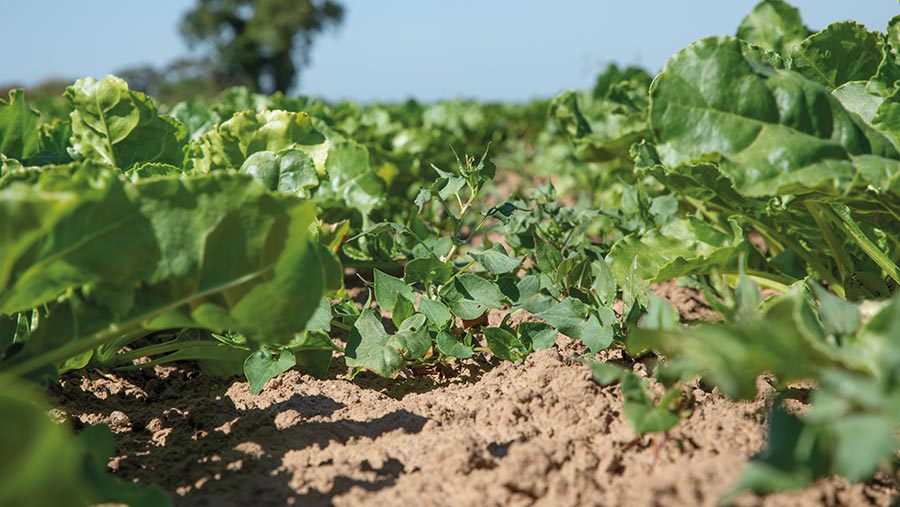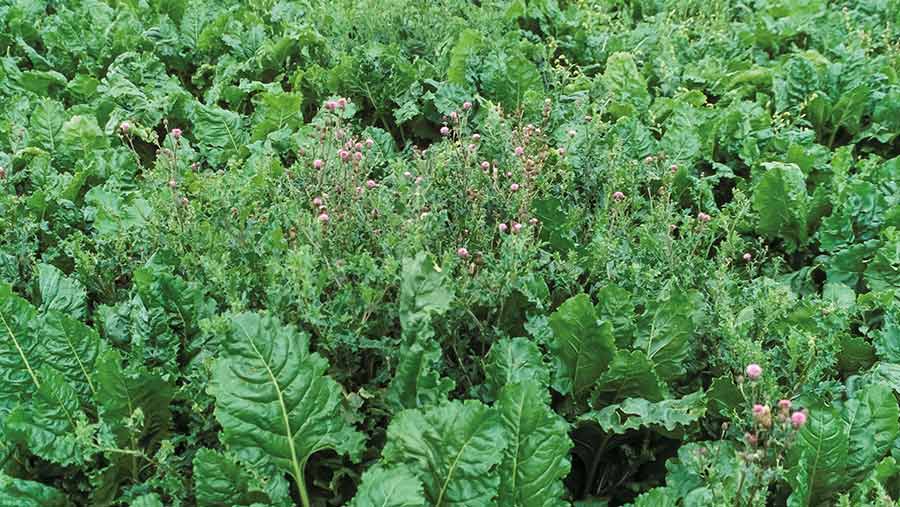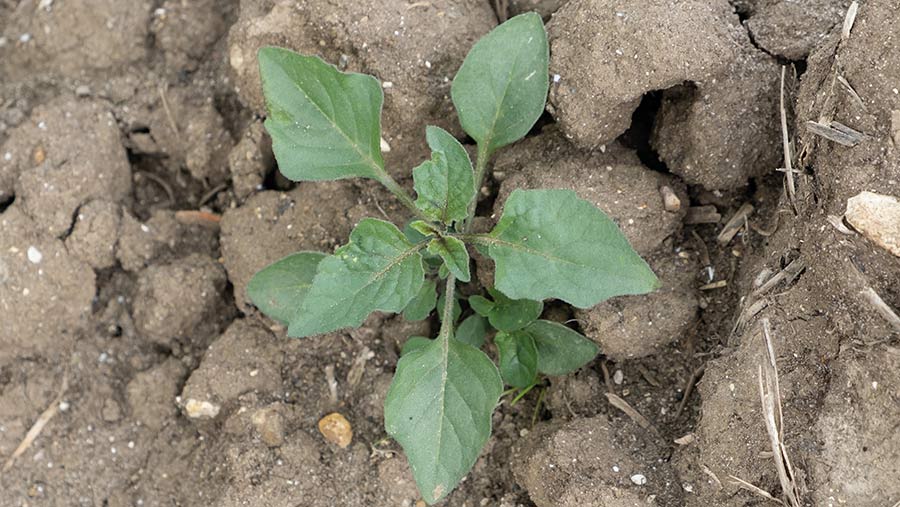What your arable weeds are telling you about soil health
 Sugar beet with weeds © Gary Naylor
Sugar beet with weeds © Gary Naylor While many see soil testing as the key tool for identifying problems, the types of weeds present can be valuable indicators of any nutrient deficiencies or excesses, or even a microbial imbalance.
Weeds are seen as a costly scourge competing with crops for space and nutrients. A good example is blackgrass, with infestations strangling wheat yields.
See also: New Zealanders share soil fungi knowledge to improve crops
However, weeds can also be valuable indicators, according to New Zealand agroecologist Nicole Masters.

© Nicole Masters
She believes the land will try to tell farmers about any underlying soil problems through the species of weeds present.
Soil contains thousands of seeds in every square metre and which ones contained in the seed bank germinate is down to the conditions. “So what is it that has made this weed germinate?”
It may be low organic matter, poor fertility or an imbalance in soil microbes.
For example, if farmers see mosses and lichens on the soil surface, then they should be concerned. They don’t require soil to grow and are present because nothing else will grow.
Alternatively, some weeds may be thriving because there is an imbalance.
Ms Masters explains that some are known as “dynamic accumulators”. They draw up nutrients such as copper and calcium and make them available in the soil. These plants are trying to correct that deficiency.
Where there is a suspected problem, she advises carrying out leaf-tissue testing and comparing them with the desired plant – the crop being grown.
She points to an example in Australia where the invasive broad-leaved capeweed was prevalent and ryegrass productivity was poor. Capeweed is a dynamic accumulator and tissue testing found some surprising results.
For example, calcium was three times higher in capeweed than ryegrass, and boron was 10 times higher. The results correlated with a soil test that showed low levels of calcium, sodium, zinc and boron.
So the farmer applied these to the soil and there has been a shift back to ryegrass germinating and thriving rather than the capeweed.
Here are some pointers on what some of the weeds that could be in your fields mean:
- Foxtail barley grass (primitive grasses) – low calcium, high nitrates, compaction
- Broad-leaved weeds – often prefer low phosphorus or high potassium
- Groundsel – low organic matter
- Creeping thistle – compaction, low calcium, parts of soil not breathing
- Cleavers and bindweed – soil that is losing organic matter

Creeping thistle © Blackthorn Arable
Soil fertility
- Low fertility weeds Moss/liverworts, rushes, crested dogstail, foxtail barley grass, wild carrot and Yorkshire fog. These are indicating:
- Low fertility
- Low phosphorus and calcium
- Low fungi
- Low biological activity
- Check soil structure/compaction
- Also suggest overgrazing
- Medium fertility weeds Annual ryegrass, barnyard grass, tall fescue and tall wheat grass. They suggest that soil may need calcium and farmers should check for compaction and crusting. Soils will also be bacterial dominant.
- High fertility weeds Prairie grass, cocksfoot, dandelions and nettles. They may indicate excess of some nutrients such as magnesium, potassium and nitrates. Farmers should check the calcium-to-magnesium ratio and lift carbon levels.
Other indicators

Black nightshade © Blackthorn Arable
- Weeds of excess Includes black nightshade, marshmallow, barley grass and stinging nettle. They indicate excess nutrients, very high biological activity and an imbalance in the nitrogen cycle. They also may indicate low protozoa and low carbohydrates. Farmers should consider balancing soil minerals and feed the soil fungi. Perhaps apply humates and vermicast and inoculate with protozoa using a protozoal tea. In smaller pastures, move stock more often with longer recoveries.
- Release valve weeds Includes knapweed, rats tail /barley grass, teasle and ragwort. These grow where there are accumulations of contaminants such as heavy metals, drenches or around chemical sheds. The weeds are trying to mop up something. Ms Masters advises farmers to avoid grazing these areas and to soil test for possible contamination. Plant other release valve crops such as sunflowers, willows and western wheat grass. Consider treating with humates and biochar to bind with the chemicals.
- Mineral imbalances Ragwort suggests low copper and dandelions indicate high potassium.
- Fungi: bacteria balance Mullen and hollyhocks grow in forest areas and are fungal indicators. In contrast, foxtail, crabgrass and blackgrass are bacterial soil indicators.
- Low organic matter soils (1.5-2%) Purslane. Look at increasing organic matter levels.
- Non-mycorrhizal fungi weeds Lupin, brassicas, sedges and rushes, pigweed and fan weed. “If you see lots of wild radish then your soil fungi is not working,” she warns.
Livestock can be indicators too
It is not just weeds – livestock can also be indicators of any soil mineral imbalances.
With cattle, if white hair is longer than coloured hair, then there could be a zinc deficiency, or if their noses are dry, it may indicate a sodium deficiency, says Nicole Masters.
She points to one farm visit where animal performance was suffering and she noticed their joints were clicking. “This is an indicator of boron deficiency.”
Nicole Masters was speaking at a two-day soil workshop held at Althorp Estate, Northamptonshire

